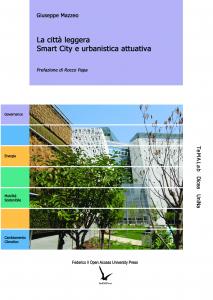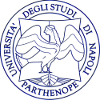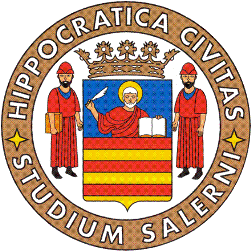The lightweight city: Smart city and operative planning
Keywords:
Urbanistica attuativa; Trasformazione urbana; Sostenibilità; SmartnessSynopsis
Publisher: FedOA Press (Federico II Open Access University Press).
Series: Smart City, Urban Planning for a Sustainable Future.
Pages: 200.
Language: Italian.
NBN: http://nbn.depositolegale.it/urn:nbn:it:unina-22032
Abstract: Cities are in a state in which two opposing forces are acting on them: on the one hand the unabated urbanization process, on the other the evergrowing demand for real sustainability. The book proposes an urban planning response focused on the transformations of urban sectors to be achieved using innovative operative tools; for this aim the book defines the main features of this operative tools. The goal is to include in the cities innovative actions that can provoke a domino effect with repercussions on the entire urban structure.
The book is devided in 5 sections. The first one addresses the issue of urbanization and the development of the urban systems, with the related implications in terms of resource consumption and concentration of people and functions. The second part discusses some models that explain the mechanisms of urban sprawl and the derived scenarios. The third part deals with one of the key nodes of the relationship between urban systems and environmental resources, namely the energy. The fourth part analyzes some international case studies to extrapolate recurring characteristics that can affect the operative planning. The fifth section focuses on the features of this new type of plan.
Downloads
References
AAVV (2012). Minato Mirai 21, Area Management Charter. Yokohama, Yokohama Minato Mirai 21 Corporation.
AAVV (2013). World Green Building Trends. Bedford, MA, McGraw-Hill Construction.
AAVV (2015). The right place for you in science city Heidelberg. Heidelberg, EGH.
Alberti, M., Solerà, G., Tsetsi, V. (1994). La città sostenibile. Milano, Legambiente, FrancoAngeli.
Antoniaconi, G. (2010). “L’amministrazione alla prova. Il caso del compendio ex Michelin di Trento”. In G. Codecasa (Ed.), Governare il partenariato pubblico e privato nei progetti urbani. Bologna, Maggioli Editore. 21-40.
Antrop, M. (2004). “Landscape change and the urbanization process in Europe”. Landscape and Urban Planning. 67:1-4, 9-26. DOI:10.1016/S0169-2046(03)00026-4.
Amati, M., Yokohari, M. (2006). “Temporal changes and local variations in the functions of London's green belt”. Landscape and Urban Planning. 75:1-2, 125-142. DOI:10.1016/j.landurbplan.2004. 12.007.
Augé, M. (2005). “Per inventare un nuovo futuro”. la Repubblica, 1° febbraio.
Balabanab, O., Puppim de Oliveira, J.A. (2014). “Understanding the links between urban regeneration and climate-friendly urban development: lessons from two case studies in Japan”. Local Environment: The International Journal of Justice and Sustainability. 19:8, 868-890. DOI:10.1080/13549839.2013.798634. (A001182).
Bateson, G. (1976). Verso un’ecologia della mente. Milano, Adelphi.
Batty, M. (2011). “Building a science of cities”. UCL Working Papers. 170, November. Londra, UCL.
Batty, M., Barros, J., Sinesio-Alves, J. (2005). “The Dynamics of Cities”. In A. Bruzzo, S. Occelli (Eds.), Le relazioni tra conoscenza ed innovazione nello sviluppo dei territori. Milano, FrancoAngeli, 371-385.
Bauman, Z. (2013). Lo spirito e il clic. La società contemporanea tra frenesia e bisogno di speranza. Cinisello Balsamo, Edizioni San Paolo.
Benevolo, L. (1966). Storia dell’architettura moderna. Bari, Laterza.
Berry, B. (1964). “Cities as systems within systems of cities”. Papers and Proceedings of the Regional Science Association. 13, 147-164.
Berthon, B., Guittat, P. (2011). “Ascesa della città intelligente”. Outlook. 2, http://www.accenture.com/ itit/outlook/Pages/index.aspx.
Borsdorf, A., Hidalgo, R., Sanchez, R. (2007). “A new model of urban development in Latin America: The gated communities and fenced cities in the metropolitan area of Santiago de Chile and Valparaiso”. Cities, 24:5, 365-378. DOI:10.1016/j.cities.2007.04.002.
Brundtland Commission Report (1987). Our Common Future. Oxford, Oxford University Press.
Burgess, E.W. (1925). “The Growth of the City: an Introduction to a Research Project”. In R.E. Park, E.W. Burgess, R.D. McKenzie (Eds.), The city. Chicago, The University of Chicago Press.
Camagni, R. (1996). “Lo sviluppo urbano sostenibile: le ragioni e i fondamenti di un programma di ricerca”. In R. Camagni (Ed.), Economia e pianificazione della città sostenibile. Bologna, il Mulino. 13-51.
Camagni, R., Lombardo, S. (1999). La città metropolitana: strategie per il governo e la pianificazione. Firenze, Alinea Editrice.
Campos Venuti, G. (2013). “Patrimonio edilizio: rigenerazione vs espansione”. Inforum. 42, 6-9.
Carlucci, A. (2013). “Ridateci il sogno. Colloquio con Joseph Stiglitz”. L’Espresso. http://espresso. repubblica.it.
CASBEE (2012). CASBEE for Cities, Technical Manual. Japan Sustainable Building Consortium.
Castells, M. (1989). The informational city: information technology, economic restructuring and the urban-regional process. Oxford, Blackwell.
Castells, M. (1983). The City and the Grassroots. Londra, Arnold.
CDP (2013). Seven Climate Change Lessons from the Cities of Europe. CDP Cities 2012. CDP - Carbon Disclosure Project. www.cdproject.net.
CDP (2014). Protecting our capital. How climate adaptation in cities creates a resilient place for business. CDP, www.cdp.net.
Cederna, A. (1973). “Nuove alluvioni ripropongono il grave problema della difesa dell’ambiente. Perchè l’Italia frana quando piove”. Corriere della Sera. 3 gennaio.
Chapin, F.S. III, Carpenter, S.R., Kofinas, G.P., Folke, C., Abel, N., Clark, W.C., Olsson, P., Stafford Smith, D.M., Walker, B., Young, O.R., Berkes, F, Biggs, R., Grove, J.M., Naylor, R.L., Pinkerton, E., Steffen, W., Swanson, F.J. (2009). “Ecosystem stewardship: Sustainability strategies for a rapidly changing planet”. Trends in Ecology and Evolution. 25:4, 241-249. DOI: 10.1016/j.tree.2009.10.008.
Cerone, R. (2004). Joan Busquets: un progetto europeo per Trento. Rovereto, Nicolodi.
Cianciullo, A. (2013). “Energia intelligente”. la Repubblica. 2 ottobre.
Ciorra, P. (2013). “Cura energetica”. In P. Ciorra (Ed.), Energy. Architettura e reti del petrolio e del post-petrolio. Milano, Electa.
City of Helsinki (2013). Helsinki City Plan. Vision 2015. Urban plan, the new Helsinki city plan. Helsinki, City of Helsinki, City Planning Department.
Cheli, E. (2010). Olismo la scienza del futuro. Verso una civiltà ecologica, pacifica e consapevole. Milano, Xenia Edizioni.
Cole, R.J. (2011). “Environmental Issues Past, Present & Future: Changing Priorities & Responsibilities for Building Design”. SB11 Helsinki World Sustainable Building Conference. Helsinki.
Commissione Europea (1990). Libro Verde sull’ambiente urbano. Bruxelles, Commissione delle Comunità Europee.
Commissione Europea (2010). Europe 2020: A strategy for smart, sustainable and inclusive growth. COM(2010) 2020. Bruxelles, Commissione delle Comunità Europee.
Commissione Europea (2011). A Roadmap for moving to a competitive low carbon low carbon economy in 2050. COM(2011) 112. Bruxelles, Commissione delle Comunità Europee.
Commissione Europea (2011). Roadmap to a Resource Efficient Europe. COM(2011) 571. Bruxelles.
Condon, P.M., Cavens, D., Miller, N. (2009). Urban Planning Tools for Climate Change Mitigation, Lincoln Institute of London Policy. www.lincolninst.edu.
Confindustria (2015). Fabbrica 4.0. La rivoluzione della manifattura digitale. Milano, Il Sole 24 Ore.
Dales, J. (2013). What people have done, people can do: Or can they?. http://www.rudi.net/node/57890. Accesso: 03/07/2013.
Damodaran, A. (s.d.). Probabilistic Approaches: Scenario Analysis, Decision Trees and Simulations, Teaching paper available at: http://people.stern.nyu.edu/adamodar/pdfiles/papers /probabilistic.pdf. Accesso 15/11/2011.
De Roo, G. (2008). “A Theory of Transition and its Relevance to Planning Theory and Practice. A Non-Linear Understanding of Spatial Development”. Proceedings of the VIIth meeting of Aesop’s Thematic Group on Complexity and Planning. Milano, 22-23 Febbraio.
Di Ludovico, D. (2011). “Valutazione e quadri conoscitivi”. In AAVV, Rapporto dal Territorio 2010. Roma, INU Edizioni, 431-442.
Dodman, D. (2009). “Blaming cities for climate change? An analysis of urban greenhouse gas emissions inventories”. Environment & Urbanization. 21:1, 185-201. DOI: 10.1177/0956247809103016.
Dubeski, N. (2001). “Durkheim’s Altruism As The Source Of His Social Holism: A Discussion Of The Viability Of A Social Basis For Moral Principles”. Electronic Journal of Sociology. http://www.sociology.org/content/vol005.003/dubeski.html.
Eames, M., Dixon, T., May, T, Hunt, M. (2013). “City futures: exploring urban retrofit and sustainable transitions”. Building Research & Information. 41:5, 504-516. DOI: 10.1080/09613218.2013.805063.
EDGAR (2016). CO2 time series 1990-2014 per capita for world countries. Bruxelles, EDGAR, Emission Database for Global Atmospheric Research, http://edgar.jrc.ec.europa.eu/ overview.php?v=CO2ts_pc1990-2014. Accesso: 30/01/2016.
EEA (2012). Urban adaptation to climate change in Europe. Technical Report 2/2012. Copenhagen, European Environment Agency.
EEA (2013). Achieving energy efficiency through behaviour change: what does it take? Technical Report 5/2013, Copenhagen, European Environment Agency.
EEA (2013). Towards a green economy in Europe. EU environmental policy targets and objectives 201-2050. Technical Report 8/2013. Copenhagen, European Environment Agency.
EEA (2015). SOER 2015 - The European environment. State and outlook 2015. Copenhagen, EEA. http://www.eea.europa.eu/soer.
EEA (2016). Renewable energy in Europe 2016. Recent growth and knock-on effects. Technical Report 4/2016. Copenhagen, EEA
EPA (2010). Planning for a sustainable Future. A Guide for Local Governments. New York, U.S. Environmental Protection Agency.
EPA-Malaga City Council (2012). Sustainable urban models, Malaga. CAT-MED Project, http://www.catmed.eu/.
EU (2007). Presidency conclusions, Council of the European Union. Bruxelles, 8/9 marzo 2007, 7224/1/07, rev. 1.
Engström, D. (2002). PvNord – Paving the Way for BIPV in Northern Europe, PvNord Report, Göteborg.
Ewing, R., Bartholomew, K., Winkelman, S., Walters, J., Chen, D. (2008). Growing cooler: The evidence on urban development and climate change. Washington, DC: Urban Land Institute, Smart Growth America, Center for Clean Air Policy, and National Center for Smart Growth Education and Research. www.smartgrowthamerica.org /gcindex.html.
Fabietti, W. (Ed.) (1999). Vulnerabilità e trasformazione dello spazio fisico. Bologna, Alinea Editrice.
Faninger-Lund, H., Lund, P. (2000). “Toward sustainable cities: case Ekoviikki in Helsinki and its solar project”. Proceed ISES-Europe Conference EUROSUN-2000. Copenhagen, 19-23 giugno.
Fenn, J., Raskino, M. (2008). Mastering the hype cycle: how to choose the right innovation at the right time. Harvard, Harvard Business Press.
Ferrante, A., Semprini, G. (2011). “Building energy retrofitting in urban areas”. Procedia Engineering. 21, 968-975. DOI:10.1016/j.proeng.2011.11.2101.
Flint, A. (2015). “Can Regenerative Design Save the Planet?”. www.citylab.com. 19 maggio. http://www.citylab.com/design/2015/05/can-regenerative-design-save-the-planet/393626/.
Fregolent, L. (2012). “La città a bassa densità. Problemi e gestione”. TeMA. Journal of land use, mobility and environment. 5:1, 7-19. DOI: 10.6092/1970-9870/742.
Frenchman, D. (2014). “Designing Better Cities”. In S. Yusuf (Ed.), The Buzz in Cities: New Economic Thinking. Washington, DC, The Growing Dialogue.
Galderisi, A., Mazzeo, G., Pinto, F. (2016). “Cities Dealing with Energy Issues and Climate-Related Impacts: Approaches, Strategies and Tools for a Sustainable Urban Development”. In R. Papa, R. Fistola (Eds.), Smart Energy in the Smart City. Cham, Springer International Publishing. 199-217. DOI: 10.1007/978-3-319-31157-9_11.
Gargiulo, C. (2009). “Sistema Urbano e Complessità”. In R. Papa (Ed.), Il governo delle trasformazioni urbane e territoriali. Metodi, tecniche e strumenti. Milano, FrancoAngeli, 23-46.
Garnier, T. (1917). Une cité industrielle, étude pour la construction des villes. Parigi, Massin.
GFN (2010). Ecological Footprint Atlas 2010. Oakland, CAL, Global Footprint Network.
Gramsci, A. (1975). Quaderni dal Carcere. Torino, Einaudi Editore.
Grotewold, A. (1959). “Von Thunen in Retrospect”. Economic Geography. 35:4, 346-355.
Guillerme, A. (1988). “Sottosuolo e costruzione della città”. Casabella. 542-543, 30-35.
Hall, P. (1998). Cities in civilization. New York, Pantheon.
Hassler, U., Kohler, N. (2014). “Resilience in the built environment”. Building Research & Information. 42:2, 119-129. DOI:10.1080/09613218.2014.873593.
Heilig, G.K. (2012). World Urbanization Prospects. The 2011 Revision, Presentation at the Center for Strategic and International Studies (CSIS). Washington, DC, June 7th, 2012. United Nations, Department of Economic and Social Affairs (DESA).
Horton, R., Rosenzweig, C., Solecki, W., Bader, D., Sohl, L. (2016). “Climate science for decision-making in the New York metropolitan region”. In A.S. Parris, G.M. Garfin, K. Dow, R. Meyer, S.L. Close (Eds.), Climate in Context. Science and Society Partnering for Adaptation. Chichester, John Wiley and Sons, 51-74.
Howard, E. (1946, ed. or. 1902). Garden Cities of To-Morrow. Londra, Faber and Faber.
Huovila, P. (1999). On the Way towards Sustainable Building. Draft.
Huss, W.R. (1988). “A move toward scenario analysis”. International Journal of Forecasting. 4:3, 377-388. DOI:10.1016/0169-2070(88)90105-7.
IAEA (s.d.). Integrated energy planning for sustainable development. Vienna, International Atomic Energy Agency. https://www.iaea.org/OurWork/ST/NE/Pess/assets/IEPSD%20Brochure%20 WEB.pdf. Accesso: 10/02/2016.
IPCC (2013). Climate Change 2013. The Physical Science Basis. New York, Cambridge University Press.
ISDR (2004). Living with Risk. A Global Review of Disaster Reduction Initiatives, http://www.unisdr.org/we/ inform/publications/657.
Kidokoro, T. (2008). “Urban Regeneration and the Shift of Planning Approaches: The Case of Japanese Regional Cities”. Sustainable City Regions. 7, 145-162. DOI: 10.1007/978-4-431-78147-9_8.
Kirby, A. (1995). “Cities. A research agenda for the close of the century”. Cities. 12:1, 5-11. DOI: 10.1016/0264-2751(95)91861-9.
Knowles, R.D. (2012). “Transit Oriented Development in Copenhagen, Denmark: from the Finger Plan to Ørestad”. Journal of Transport Geography. 22, 251-261. DOI:10.1016/j.jtrangeo.2012.01.009.
Lacaze, J.-P. (1993). “L’urbanisme entre mythe et réalité”. Actions et recherches sociales. 1/93. 21-30.
Le Corbusier, (1967). The Radiant City: Elements of a Doctrine of Urbanism to Be Used as the Basis of Our Machine-Age Civilization, New York, Orion Books. Ed. or.: 1933.
LEED (2013). LEED 2009 for Neighborhood Development, Congress for the New Urbanism. Washington DC, Natural Resources Defense Council, and the U.S. Green Building Council. Update 2013.
Lennar Urban (2008). Candlestick Point/Hunters Point Shipyard Phase II. Urban Design Plan. Draft. Lennar Urban, IBI Group, Thomas Balsley Associates, Royston Hanamoto Alley & Abey.
Lévy, P. (1996). L’intelligenza collettiva. Per un’antropologia del cyberspazio. Milano, Feltrinelli Editore.
Loarie, S.R., Duffy, P.H., Hamilton, H., Asner, G.P., Field, C.B., Ackerly, D.D. (2009). “The velocity of climate change”. Nature. 462, 1052-1055. DOI: 10.1038/nature08649.
Lyotard, J.-F. (1981). La condizione postmoderna. Rapporto sul sapere. Milano, Feltrinelli Editore.
Malizia, E. (1997). Dizionario dell’Ambiente. Roma, Newton Compton.
Maugeri, L. (2013). “Quanto costa agli USA il primato del petrolio”. l’Espresso. 17 luglio, 112-113.
Mazzeo, G. (1998). “La trasformazione dell’intervento sulla città: dal recupero alla riqualificazione”. In G. Mazzeo (Ed.), Saper vedere … le trasformazioni urbane e territoriali. Napoli, Università degli Studi di Napoli «Federico II», DiPiST, 516-537.
Mazzeo, G. (2009). “Dall’area metropolitana allo sprawl urbano: la disarticolazione del territorio”. TeMA – Journal of Land Use, Mobility and Environment. 2:4, 7-20. DOI: 10.6092/1970-9870/100.
Mazzeo, G. (2010). “L’Expo 2010 di Shanghai e lo sviluppo della Cina”. TC trasporti & cultura. X:27-28, 16-23.
Mazzeo, G. (2011). “Trasformazioni urbane nelle capitali post-unitarie: Torino, Firenze, Roma”. TeMA – Journal of Land Use, Mobility and Environment. 4:1, 15-28. DOI:10.6092/1970-9870/202.
Mazzeo, G. (2011). Città a meno del piano. L’indifferenza delle strutture urbane alla pianificazione. Milano, FrancoAngeli.
Mazzeo, G. (2012). “Scenarios of city’s evolution between urbanization and deurbanization”. In M. Campagna, A. De Montis, F. Isola, S. Lai, C. Pira, C. Zoppi (eds.), Planning Support Tools: Policy Analysis, Implementation and Evaluation. Proceedings of the Seventh International Conference on Informatics and Urban and Regional Planning INPUT2012, FrancoAngeli, Milano, 1232-1244.
Mazzeo, G. (2013). “Città “fossile” vs città “rinnovabile”: applicabilità dei modelli sostenibili ai sistemi urbani”. XVI Conferenza Nazionale SIU “Urbanistica per una diversa crescita. Aporie dello sviluppo, uscita dalla crisi e progetto del territorio contemporaneo”. Napoli, 9-10 maggio 2013. Planum. The Journal of Urbanism, 27:2, 1-7.
Mazzeo, G. (2013). “City and energy infrastructures between economic processes and urban planning”. Tema. Journal of Land Use, Mobility and Environment. 6:3, 311-324. DOI: 10.6092/1970-9870/1929.
Mazzeo G. (2013). “Valutare la rigenerazione urbana: verso una certificazione di resilienza per le città”, Contributo al XXVIII Congresso INU “Città come motore dello sviluppo del Paese”, Salerno, 24-26 ottobre 2013, in Urbanistica Dossier on line, n. 4, 2013, 169-171.
Mazzeo, G. (2014). “Urban Labelling: Resilience and Vulnerability as Key Concepts for a Sustainable Planning”. INPUT 2014, Smart City: planning for energy, transportation and sustainability of the urban system. Tema. Journal of Land Use, Mobility and Environment. [S.l.], 671-682. DOI: 10.6092/1970-9870/2483.
Mazzeo, G. (2014). “Labelling urbano come programma di lavoro sulla città”. Eyesreg. 4:1, 27-30.
Medd, W., Marvin, S. (2005), “From the Politics of Urgency to the Governance of Preparedness: A Research Agenda on Urban Vulnerability”. Journal of Contingencies and Crisis Management. 13:2, 44-49. DOI: 10.1111/j.1468-5973.2005.00455.x.
Moccia, F.D. (2010). “Densificazione delle aree sottoutilizzate”, XIII Conferenza Società Italiana degli Urbanisti “Città e crisi globale: clima, sviluppo e convivenza”, Roma, 25-27 febbraio 2010. www.siu.dipsu.it. Accesso 3 gennaio 2012.
Moccia, F.D. (2013). “Per una metropoli resiliente”. Urbanistica Informazioni, 248, 64-66.
Moccia, F.D. (2013). “Ecological restoration methodology”. In F.D. Moccia, M.F. Palestino (Eds.), Planning Stormwater Resilient Urban Open Spaces. Napoli, Clean Edizioni.
Mumford, L. (1945). “The metropolitan milieu”. In L. Mumford, City development. New York, Harcourt, Brace and Company.
Mumford, L. (1967). La città nella storia. Milano, Bompiani.
Murray, J., King, D. (2012). “Oil’s tipping point has passed”. Nature, 481:7382, 433-435.
Nechyba, T.J., Walsh, R. P. (2004). “Urban Sprawl”. Journal of Economic Perspective, 18:4, 177-200. DOI: 10.1257/0895330042632681.
Norman, J., McLean, H.L., Kennedy, C.A. (2006). “Comparing high and low residential density: Life-cycle analysis of energy use and greenhouse gas emissions”. Journal of Urban Planning and Development. 132:1, 10-21. DOI: 10.1061/(ASCE)0733-9488(2006)132:1(10).
Owens, S. (1992). “Energy, Environmental Sustainability and Land-use Planning”. In M. Breheney, Sustainable Development and Urban Form. Londra, Pion.
Papa, R. (1993). “Architettura e nuove tecnologie verso la città intelligente”. In AA.VV., Progettare e costruire per il 2000. Napoli, CNR-IPiGeT, Università di Napoli Federico II, DiPiST. 17-22.
Papa, R., Gargiulo, C. & Battarra, R. (2016). Città Metropolitane e Smart Governance. Iniziative di successo e nodi critici verso la Smart City. Napoli, FedOAPress.
Papa, R., Gargiulo, C., Cristiano, M., Di Francesco, I., Tulisi, A. (2015). “Less Smart More City”. Tema. Journal Of Land Use, Mobility And Environment. 8:2, 159-182. DOI: 10.6092/1970-9870/3012.
Papa, R., Gargiulo, C., Galderisi, A. (2013). “Towards an urban planners’ perspective on smart city”. TeMA, Journal of Land Use, Mobility and Environment. 6:1, 5-17. DOI: 10.6092/1970-9870/1544.
Papa, R., Gargiulo, C., Zucaro, F (2016). “Towards the Definition of the Urban Saving Energy Model (UrbanSEM)”. In R. Papa, R. Fistola (Eds.), Smart Energy in the Smart City. Urban Planning for a Sustainable Future. Switzerland, Springer International Publishing. 151-175. DOI: 10.1007/978-3-319-31157-9_9.
Pedersen, P.O. (1970). “Innovation Diffusion within and between Urban Systems”. Geographical Analysis. 2:3, 203-254. DOI: 10.1111/j.1538-4632.1970.tb00858.x.
Piorr, A., Ravets, J., Tosics, I. (2011). Peri-urbanization in Europe. Towards European Policies to Sustain Urban-Rural Futures. Syntesis Report. Berlino, PLUREL Consortium.
Pollard, J.S. (2004). “From Industrial District to ‘Urban Village’? Manufacturing, Money and Consumption in Birmingham’s Jewellery Quarter”. Urban Studies. 41:1, 173-193. DOI: 10.1080/0042098032000155731.
Postma, T.J.B.M., Liebl, F. (2005). “How to improve scenario analysis as a strategic management tool?”. Technological Forecasting & Social Change. 72:2, 161-173. DOI:10.1016/j.techfore.2003.11.005.
Rapoport, A. (Ed.) (1976). The mutual interaction of people and their built environment: A cross-cultural perspective. Chicago, Aldine.
Rees, W. (1992). “Ecological Footprints and Appropriate Carrying Capacity: What Urban Economics Leaves Out”. Environment and Urbanization. 4:2, 121-130. DOI: 10.1177/095624789200400212.
REN21, UNEP (2015). Renewables 2014. Global Status Report. Paris, REN21, UNEP. A001194.
Rittel, H., Webber, M. (1973). “Dilemmas in a general theory of planning”. Policy Science. 4:2, 155-169.
Reed, A.J., Mann, M.E., Emanuel, K.A., Lin, N., Horton, B.P., Kemp, A.C., Donnelly, J.P. (2015). “Increased threat of tropical cyclones and coastal flooding to New York City during the anthropogenic era”. Procedings of National Academy of Sciences. 112:41, 12610-12615. DOI: 10.1073/pnas.1513127112.
Roberts, P. (2000). “The evolution, definition and purpose of urban regeneration”. In P. Roberts, H. Sykes (Eds.), Urban Regeneration. Londra, Sage.
Roggema, R., Vermeemd, T., Dobbelsteen, A. (2012). “Incremental Change, Transition or Transformation? Optimising Change Pathways for Climate Adaptation”. Spatial Planning. Sustainability. 4:12, 2525-2549. DOI: 10.3390/su4102525.
Rosensweig, C., Solecki, W.D. (Eds.) (2001). Climate Change and a Global City: The Potential Consequences of Climate Variability and Change-Metro East Coast. Report for the US Global Change Research Program, National Assessment of the Potential Consequences of Climate Variability and Change for the United States, New York, Columbia Earth Institute.
Rossi, A. (2009). “Rigenerazione urbana e sostenibilità”. Urbanistica. 141, 1-5.
Rotmans, J. (2006). “A complex systems approach for sustainable cities”. In M. Ruth (Ed.), Smart growth and climate change. Cheltenham, Edward Elgar.
Rulli, M.C., Saviori, A., D’Odorico, P. (2013). “Global land and water grabbing”. PNAS, 110:3, 892-897. DOI:10.1073/pnas.1213163110.
Schön, D.A. (1983). The reflective practitioner: How professionals think in action. Vol. 5126. New York, Basic Books.
Seaquist, J.W., Li Johansson, E., Nicholas, K.A. (2014). “Architecture of the global land acquisition system: applying the tools of network science to identify key vulnerabilities”. Environmental Research Letters. 9:114006 (12 pp). DOI:10.1088/1748-9326/9/11/114006.
Shim, G.-E., Rhee, S.-M., Ahn, K.-H., Chung, S.-B. (2006). “The relationship between the characteristics of transportation energy consumption and urban form”. The Annals of Regional Science, 40:2, 351-367. DOI 10.1007/s00168-005-0051-5.
Siegele, L. (2012). “Mining the urban data. Cities will become smarter, but in different ways than many people expected”. The Economist. 21 novembre.
Silvestrini, V. (1980). Uso dell’energia solare. Roma, Editori Riuniti.
Sitte, C. (1889). De Städtebau nach Seinen Künstlerishen Grundsätzen. Vienna, Verlag.
Stone, B. Jr. (2005). “An emerging role for planners in the climate change debate”. Journal of American Planning Association, 71:1, 13-25. DOI: 10.1080/01944360508976402.
Studio Ambrosetti (2012). Smart cities in Italy: an opportunity in the spirit of the Reinassance for a new quality of life. Sesto San Giovanni, ABB.
Thornley, A. (1992). The crisis of London. Londra, Routledge.
Trigilia, C. (1999). “Capitale sociale e sviluppo locale”. Stato e mercato. 57:3, 419-440. DOI: 10.1425/435.
Tyler, S., Moench, M. (2012). “A framework for urban climate resilience”. Climate and Development. 4:4, 311-326. DOI: 10.1080/17565529.2012.745389.
Ulrici, G. (2011). “La riqualificazione dell’ex Michelin: la città e l’archistar”. Urbanistica informazioni. 237, 53.
UN (2004). World Population to 2300. New York, United Nations, Department of Economic and Social Affairs/Population Division.
UN (2012). World Urbanization Prospect. The 2011 Revision. New York, United Nations, Department of Economic and Social Affairs/Population Division.
UN (2013). World Population Prospects. The 2012 Revision. Highlights and Advance Tables. New York, United Nations, Department of Economic and Social Affairs/Population Division.
UN (2015a). The Millennium Development Goals Report 2015. New York, United Nations.
UN (2015b). World Population Prospects. The 2014 Revision. New York, United Nations, Department of Economic and Social Affairs/Population Division.
UNEP (2011). Towards a Green Economy: Pathways to Sustainable Development and Poverty Eradication. http://www.unep.org/greeneconomy. Accesso: 15/01/2016.
UN-Habitat (2011). Hot Cities: battle-ground for climate change. Nairobi, United Nations Human Settlements Programme.
UN-Habitat (2012). State of the Word’s Cities 2012-2013. Prosperity of the cities. Nairobi: UN-Habitat.
URBACT (2015). Sustainable regeneration in urban areas. Saint Denis, European Union, URBACT II.
Van der Berg, L., Drewett, R., Klaassens, L.H., Rossi, A., Vijverberg, C.H.T. (1982). Urban Europe. A Study of Growth and Decline. Vol. 1. Oxford, Pergamon Press.
Vanham, D., Bidoglio, G. (2014). “The water footprint of Milan”. Water Science & Technology. 69:4, 789-794. DOI: 10.2166/wst.2013.759.
Villagran De Leon, J.C. (2006). Vulnerability. A Conceptual and Methodological Review. Publication Series n. 4-2006. Bonn, UNU-EHS.
Viollet-le-Duc, E. (1867-1872). Entretiens sur l’architecture. Parigi, Morel.
Wackernagel, M., Onisto, L., Bello, P., Callejas Linares, A., López Falfán, I.S., Méndez Garcı́a, J., Suárez Guerrero, A.I., Suárez Guerrero, M.G. (1999). “National natural capital accounting with the ecological footprint concept”. Ecological Economics. 29:3, 475-390. DOI:10.1016/S0921-8009(98)90063-5.
Wackernagel, M., Rees, W. (1996). L’Impronta Ecologica. Milano, Edizioni Ambiente.
White, R., Whitney, J. (1992). “Cities and the Environment, an Overview”. In R. Stren, R. White, J. Whitney (Eds.), Sustainable Cities, Urbanization and the Environment in International Perspective. Oxford, Westview Press.
Wilde, O. (1900). The Soul of Man. London, Arthur L. Humpreys.
Wilkinson, A., Eidinow, E. (2008). “Evolving practices in environmental scenarios: a new scenario typology. Environmental Research Letters. 3:4, 045017, 1-11.
World Economic Forum (2014). Global Risks 2014. Ninth Edition. Ginevra, WEF.
World Future Council (2010). 100% Renewable Energy – and Beyond – for Cities. Amburgo, HafenCity University.
Zhao, S., Lin, J., Cui, S. (2011). “Water resource assessment based on the water footprint for Lijiang City”. International Journal of Sustainable Development & World Ecology. 18:6, 492-497. DOI: 10.1080/13504509.2011.603383.














